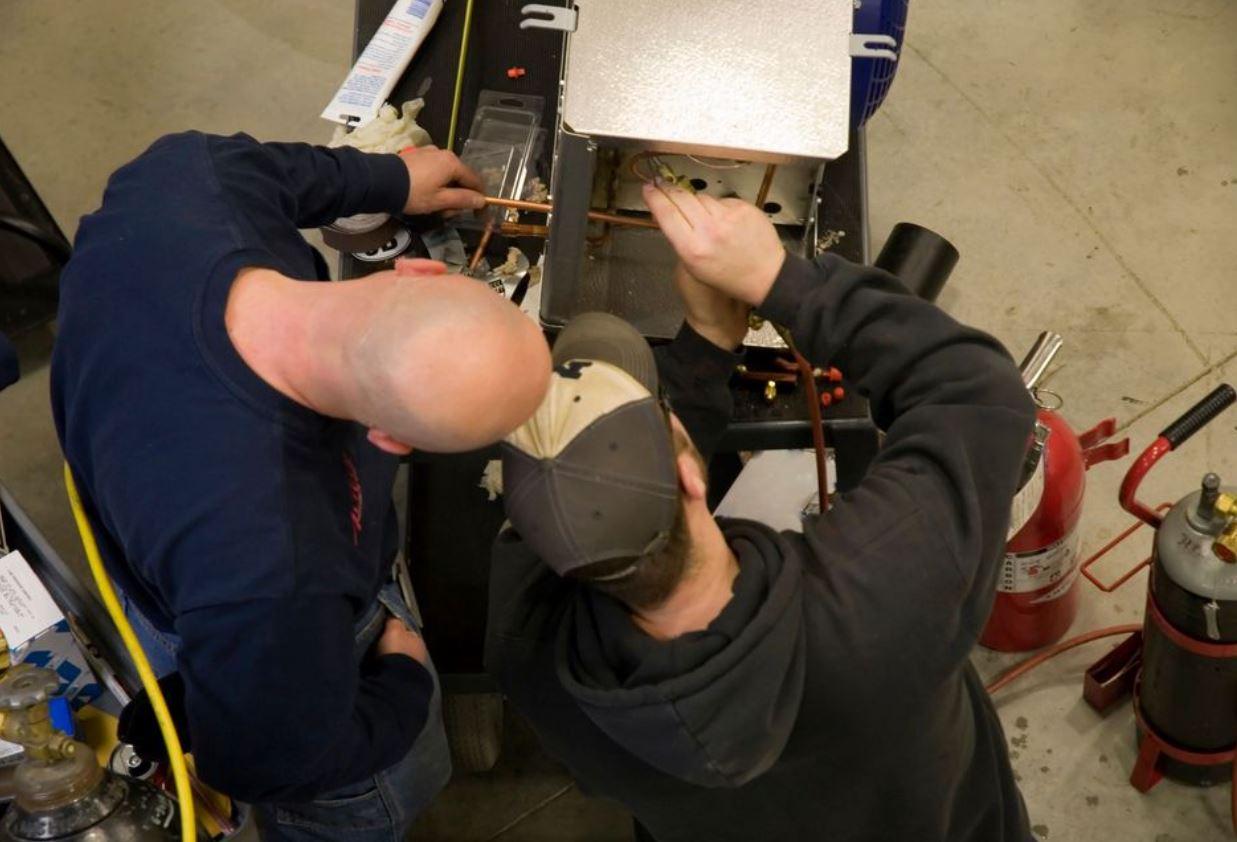DIY HVAC Repair Guide
by
Your HVAC system is one of the most important things in your home because it helps regulate the right temperature so that you can live comfortably. It is important to ensure that your HVAC system is operating efficiently—if it isn’t, you could be losing money or living in subpar conditions.
Luckily, there are many things you can do to help your HVAC system perform its best. Follow this DIY HVAC repair guide to learn all about HVAC parts, operations, issues, and HVAC troubleshooting.
Overview About HVAC System
HVAC stands for heating, ventilation, and air conditioning. An HVAC system provides the best temperature for your home by keeping it cool in the summer and warm in the winter. HVAC systems are the standard to have in both commercial and residential spaces. Not only do they help heat and cool homes and offices, but they also help provide good air quality.
HVAC Parts
What are the major components of all HVAC systems?
In order to properly address any issues with your HVAC system, from cleaning out the filter to AC repair, you need to know the common parts of your system. These are the following:
- Air Return. The air return part is where the ventilation cycle starts. It sucks air in to pull it through a filter and then through to the main system.
- Filter. The air filter cleans the air of any contaminants or pollutants and contributes to optimum air quality.
- Exhaust Outlets. These are where the exhaust created by the heating part of your system is expelled.
- Ducts. Ducts are metal passageways that the heated or cooled air passes through to get dispersed throughout your home.
- Electrical Elements. The electrical elements of your system are what gives it the power to function properly.
- Outdoor Unit. The outdoor unit contains a fan that provides airflow.
- Compressor. The compressor is part of the outdoor unit and cools the coils with refrigerant.
- Coils. Also part of the outdoor unit, a condenser coil cools the air as it passes through it.
- Blower. A blower draws in warm air through the main section of the unit.
Common HVAC Issues & Troubleshooting
What are the most common HVAC problems? and How do you diagnose HVAC problems?
Once you’ve become familiar with heating and air conditioner components comes the most important part of this DIY HVAC repair guide: HVAC problems and their solutions. Knowing how to address and fix HVAC issues on your own could save you a lot of money in the long run, as there are many DIY solutions you can perform before calling an HVAC technician. Here are 7 common HVAC issues and how to fix them:
- Make Sure Furnace Is Not an Issue
If your air conditioner is not properly cooling the house, the issue could be the furnace. Set your thermostat to the AC setting and lower the temperature. If the fan doesn’t run, then try to reset the furnace circuit breaker. If the fan won’t start after resetting it, then you’ll need to call a professional.
Make sure that your furnace is in good condition and that the pilot light is on. This will help ensure that your home is properly warmed in the colder months.
- Dirty Air Filter
An old, dirty air filter could be the culprit of HVAC issues. Regularly change your air filter to ensure maximum HVAC efficiency and prevent common HVAC problems, like weakened airflow and impure air quality. Typically, air filters should be changed about every three months and more so if you own pets. - Frozen AC Evaporator Coil
If the return air from your home cannot get to the refrigerant line, the line has no hot air to cool and can freeze. If this happens, your AC won’t properly cool your home. Dirty coils, blocked air ducts, and low refrigerants can all contribute to a frozen coil. To help it thaw, turn the thermostat to a fan-only setting. Once the system has thawed out, you’ll need to inspect why it froze in the first place. - Lack of Return Air
If there is not enough return air, your system will not properly cool or heat your house. A lack of return air can be caused by improperly sized ducts or blockages. To avoid encountering this problem, make sure that your return air ducts are in good condition. This means that they need to be tightly connected and properly sealed. - Failed Capacitor & Condenser Fan
Condenser fans help keep condensers cool, so if it fails, your home can be uncomfortably hot. To avoid this problem happening altogether, make sure to replace your system’s capacitors every five years. All you need to do is unplug the old one out and put a new one in, ensuring that the wires match up with the correct ports. - Contactor Issue
A contactor sends voltage to the compressor and condenser fan and is a common culprit of AC conditioning failures. Even it is working, replacing it every five years can ensure AC unit efficiency. To replace, just pull out the old one and snap the new one back in.
Become an HVAC Technician With Florida Academy
Want to get a full understanding of your home’s HVAC system? Check out the accredited Florida Academy HVAC technician program. Taught by industry experts and experienced professionals, this program offers some of the best HVAC education out there. You’ll learn how name-brand industry equipment operates and how it is replaced, repaired, and maintained.
Ready to launch your HVAC career? Contact us today to join the Florida Academy HVAC technician program!

